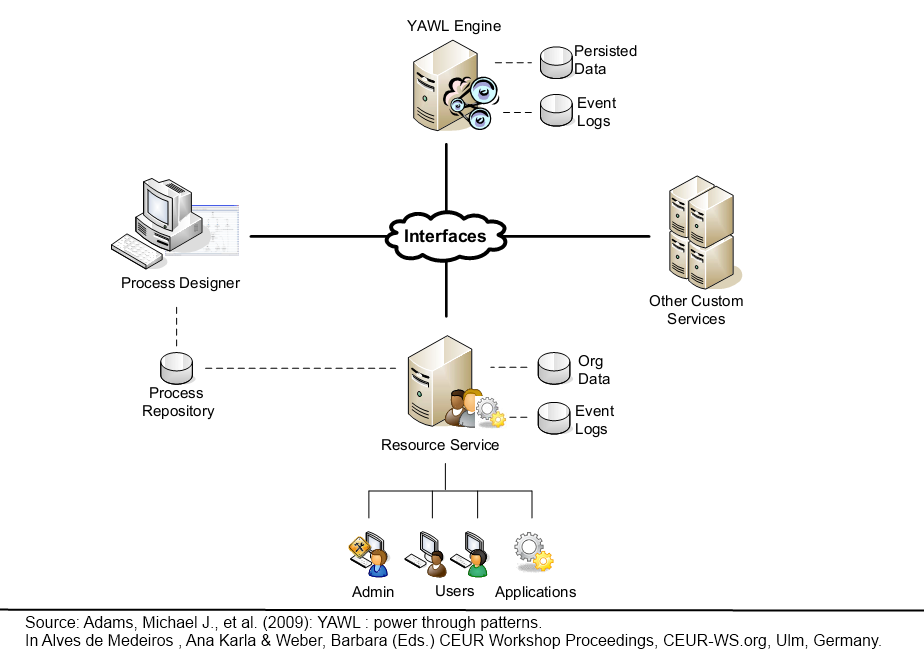Introduction
YAWL is build out of several independent web services. The two most important web services of a YAWL system are the YAWL Engine, responsible for actual workflow execution and state management, and the YAWL Resource Service, that manages information about the organisation (participants, roles, positions, etc.) and stores the work queues for each participant.
In almost every use case of a workflow management system like YAWL, it is crucial to retain the state of all managed workflows in any case. Usually there are multiple long-living workflows inside the system, loosing information about their state leads to a lot of work and may even result in restarting the case from scratch. Unfortunately every system may crash due to e.g. undiscovered errors, hardware failure or power outage. Then it should at least be possible to roll back the whole system to a consistent state some time before the crash occured.
Therefore a consistent backup of the complete YAWL system should always be kept at a safe place. Please note that this backup must contain the data of all YAWL web services (e.g. Engine and Resource Service) at the same state. For the scope of this article we assume those services all store their data to the same database, called YAWL database. Please note that within the standard configuration of YAWL this is the case.
Backup Database
Depending on your Database Management System (DBMS) there are different ways of doing a consistent backup of a running system. Depending on the available resource for each DBMS the process is described in detail or it is refered to external tutorials.
Backup Log-Files
YAWL offers an integrated logging feature via Log Predicates that can be assigned to tasks, conditions and (sub)-nets. If you don't use this feature, you may skip this section. But especially when a consistent state across distributed external systems is needed, YAWL logging could be very useful. (See below in section additional thoughts)
Additional thoughts
-
If a YAWL workflow interacts with external systems, such as the company’s web services or databases, the situation gets more complicated. Even though it is possible to create hourly backups of YAWLs internal state, rolling back to a consistent state across different distributed systems is far away from trivial. Maybe the logging feature of YAWL can be used as a starting point to recover those information in a case of failure.
-
There is already a PostgreSQL backup script available in the YAWL Wiki at code.google.com.

